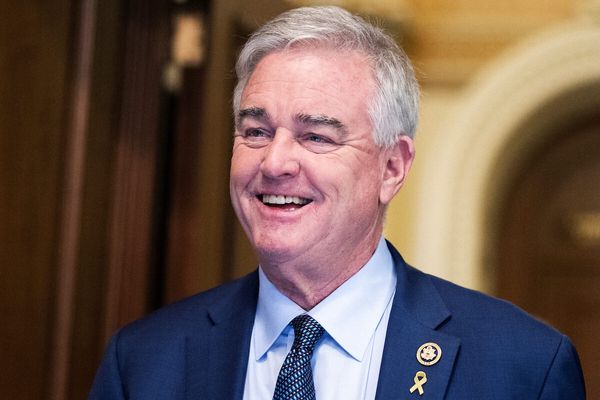
Rohit Singh Chauhan is shaking up real estate's old-school reputation. While others play it safe with tried-and-true methods, he's weaving AI into the fabric of property development, proving that sometimes the most significant innovations come from merging tradition with technology.
"Traditionally, evaluating the potential of a parcel of land was a manual process that could take weeks," he explains.
"However, when we implement AI-driven generative design algorithms, we can analyse multiple scenarios simultaneously.
“This can streamline our process to hours instead of weeks and significantly improve the accuracy of our financial projections and site utilization strategies."
Armed with seven years at the cutting edge of development and design, Rohit has proven himself to be more than just another voice in real estate - he's become a catalyst for change in an industry ripe for innovation.
His unique blend of architectural expertise and technological innovation has earned him recognition across the industry, including the Innovation in Information Management award at his former role with Godrej Properties in India.
Currently serving as a Senior Associate ofAcquisition and Development at Tishman Speyer, Rohit has recently brought his innovative approach to the $1.4 billion Harvard’s Enterprise Research Campus in Allston, Massachusetts.
The project, which secured the largest commercial real estate loan of 2023 at $750 million, showcases his ability to implement cutting-edge solutions at scale.
His innovative approach extends beyond just technological implementation. Rohit is leveraging advanced data analytics at the Enterprise Research Campus to optimize a complex mixed-use development.
The project integrates smart building technologies across its 500,000 square feet of life sciences labs, implements innovative solutions throughout 343 residential units (including 25% affordable housing), and incorporates digital infrastructure in its 246-key hotel and three acres of connected public spaces.
"Architecture taught me to see buildings as solutions to real-world problems," Rohit explains. "Adding technology to this perspective allows us to solve these problems more efficiently and create more value for everyone involved."
His focus on innovation hasn't gone unrecognized in academic circles. At MIT (Massachusetts Institute of Technology), where he earned his Master of Science in Real Estate Development, Rohit received the Award for Academic Excellence from the Center for Real Estate in 2024, acknowledging his innovative contributions as a student.
His distinctive combination of skills stems from Rohit's architectural roots and his forward-thinking mindset: "I realized my passion for problem-solving extended beyond design," he shares.
"The core of my work is about creating communities through development, and technology helps us make more informed, data-driven decisions that benefit all stakeholders."
James Scott, Director of Industry Relations at MIT, praises Rohit’s work: “His work was fantastic, worthy of advanced analytics or even a Ph.D. Challenges do not deter him; he figures it out. That’s a rare and invaluable quality.” Rohit’s relentless drive and problem-solving ability set him apart as an exceptional leader.
His technological innovations have particularly shone in financial modeling and project analysis. With his Real Estate Financial Modelling certification from Wall Street Prep and registration with the Council of Architecture, India (CA/2016/79224), Rohit has developed sophisticated systems that transform raw data into actionable insights.
At Godrej Properties in India, where he managed a portfolio exceeding $300 million, Rohit revolutionized the company's approach to site analysis. His implementation of AI-based generative design for analyzing land parcels became a benchmark for efficiency, leading to its nationwide adoption.
This innovation contributed to multiple awards, including the Realty+ Conclave Iconic Project of the Year for both Godrej Boulevard (2020) and Godrej Parkridge (2021).
"Rohit has a strong interest in leveraging AI and data to streamline processes, which is a fresh perspective in our industry," says Nicholas Fils-Aime, Director on the Acquisitions and Development Team for the Enterprise Research Campus at Tishman Speyer.
"His ability to discuss both financial metrics and design considerations adds a valuable layer of depth to our projects. He's helping propel the real estate industry in a more progressive direction, integrating AI and sustainable practices into traditional processes," Fils-Aime observes.
"His forward-thinking approach will contribute to creating efficient, sustainable developments that positively impact communities."
Rohit sees technology increasingly crucial in addressing real estate's most pressing challenges. "Real estate has a responsibility to solve broader societal challenges," he asserts. "By leveraging data and technology, we can create financially viable and socially impactful solutions."
Currently, Rohit is working on developing new applications of AI and data analytics to address housing affordability challenges: "The future of real estate development lies in our ability to harness technology to create more efficient, sustainable, and inclusive communities," he says.
"Every technological advancement brings us closer to solving these complex challenges."
His forecast for what’s to come of real estate development is clear: technology-driven, data-informed, and community-focused. The intersection of AI and real estate development is just beginning," Rohit emphasizes.
"Our AI-driven analysis tools have already transformed how we evaluate sites and optimize designs, but we're constantly pushing for more. Every innovation brings new possibilities, whether developing predictive models for market trends or creating smart building solutions that adapt to user needs."
His commitment to technological advancement reshapes industry practices: "By combining machine learning with traditional real estate expertise, we're not just improving efficiency—we're uncovering opportunities that weren't visible before," he notes.
"This helps us make better decisions faster, ultimately creating more value for everyone involved in the development process."
"When we combine technological innovation with community needs," he concludes, "we can create developments that not only meet today's demands but are also prepared for tomorrow's challenges."







